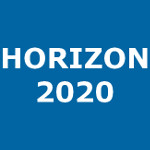Beat-to-beat cardiac repolarization lability increases during hypoxemia and arousals in obstructive sleep apnea patients
Ebrahimian, Serajeddin ; Sillanmäki, Saara ; Hietakoste, Salla ; Kulkas, Antti ; Töyräs, Juha ; Bailón, Raquel (Universidad de Zaragoza) ; Hernando, David ; Lombardi, Carolina ; Grote, Ludger ; Bonsignore, Maria R. ; Saaresranta, Tarja ; Pépin, Jean-Louis ; Leppänen, Timo ; Kainulainen, Samu
Resumen: Obstructive sleep apnea (OSA) is associated with the progression of cardiovascular diseases, arrhythmias, and sudden cardiac death (SCD). However, the acute impacts of OSA and its consequences on heart function are not yet fully elucidated. We hypothesized that desaturation events acutely destabilize ventricular repolarization, and the presence of accompanying arousals magnifies this destabilization. Ventricular repolarization lability measures, comprising heart rate corrected QT (QTc), short-time-variability of QT (STVQT), and QT variability index (QTVI), were calculated before, during, and after 20,955 desaturations from lead II electrocardiography signals of 492 patients with suspected OSA (52% men). Variations in repolarization parameters were assessed during and after desaturations, both with and without accompanying arousals, and groupwise comparisons were performed based on desaturation duration and depth. Regression analyses were used to investigate the influence of confounding factors, comorbidities, and medications. The standard deviation (SD) of QT, mean QTc, SDQTc, and STVQT increased significantly (P < 0.01), whereas QTVI decreased (P < 0.01) during and after desaturations. The changes in SDQT, mean QTc, SDQTc, and QTVI were significantly amplified (P < 0.01) in the presence of accompanying arousals. Desaturation depth was an independent predictor of increased SDQTc (β = 0.405, P < 0.01), STVQT (β = 0.151, P < 0.01), and QTVI (β = 0.009, P < 0.01) during desaturation. Desaturations cause acute changes in ventricular repolarization, with deeper desaturations and accompanying arousals independently contributing to increased ventricular repolarization lability. This may partially explain the increased risk of arrhythmias and SCD in patients with OSA, especially when the OSA phenotype includes high hypoxic load and fragmented sleep.
Idioma: Inglés
DOI: 10.1152/ajpheart.00760.2023
Año: 2024
Publicado en: AMERICAN JOURNAL OF PHYSIOLOGY-HEART AND CIRCULATORY PHYSIOLOGY 326, 5 (2024), H1094-H1104
ISSN: 0363-6135
Factor impacto JCR: 4.1 (2024)
Categ. JCR: CARDIAC & CARDIOVASCULAR SYSTEMS rank: 51 / 230 = 0.222 (2024) - Q1 - T1
Categ. JCR: PHYSIOLOGY rank: 13 / 87 = 0.149 (2024) - Q1 - T1
Categ. JCR: PERIPHERAL VASCULAR DISEASE rank: 20 / 98 = 0.204 (2024) - Q1 - T1
Factor impacto SCIMAGO: 1.464 - Cardiology and Cardiovascular Medicine (Q1) - Physiology (medical) (Q1) - Physiology (Q1)
Financiación: info:eu-repo/grantAgreement/ES/DGA/T39-23R
Financiación: info:eu-repo/grantAgreement/EC/H2020/965417/EU/Revolution of sleep diagnostics and personalized health care based on digital diagnostics and therapeutics with health data integration/SLEEP REVOLUTION
Financiación: info:eu-repo/grantAgreement/ES/MICINN/PID2021-126734OB-C21
Tipo y forma: Article (Published version)
Área (Departamento): Área Teoría Señal y Comunicac. (Dpto. Ingeniería Electrón.Com.)
 You must give appropriate credit, provide a link to the license, and indicate if changes were made. You may do so in any reasonable manner, but not in any way that suggests the licensor endorses you or your use.
You must give appropriate credit, provide a link to the license, and indicate if changes were made. You may do so in any reasonable manner, but not in any way that suggests the licensor endorses you or your use.
Exportado de SIDERAL (2025-09-22-14:39:19)
Visitas y descargas
Idioma: Inglés
DOI: 10.1152/ajpheart.00760.2023
Año: 2024
Publicado en: AMERICAN JOURNAL OF PHYSIOLOGY-HEART AND CIRCULATORY PHYSIOLOGY 326, 5 (2024), H1094-H1104
ISSN: 0363-6135
Factor impacto JCR: 4.1 (2024)
Categ. JCR: CARDIAC & CARDIOVASCULAR SYSTEMS rank: 51 / 230 = 0.222 (2024) - Q1 - T1
Categ. JCR: PHYSIOLOGY rank: 13 / 87 = 0.149 (2024) - Q1 - T1
Categ. JCR: PERIPHERAL VASCULAR DISEASE rank: 20 / 98 = 0.204 (2024) - Q1 - T1
Factor impacto SCIMAGO: 1.464 - Cardiology and Cardiovascular Medicine (Q1) - Physiology (medical) (Q1) - Physiology (Q1)
Financiación: info:eu-repo/grantAgreement/ES/DGA/T39-23R
Financiación: info:eu-repo/grantAgreement/EC/H2020/965417/EU/Revolution of sleep diagnostics and personalized health care based on digital diagnostics and therapeutics with health data integration/SLEEP REVOLUTION
Financiación: info:eu-repo/grantAgreement/ES/MICINN/PID2021-126734OB-C21
Tipo y forma: Article (Published version)
Área (Departamento): Área Teoría Señal y Comunicac. (Dpto. Ingeniería Electrón.Com.)
Exportado de SIDERAL (2025-09-22-14:39:19)
Permalink:
Visitas y descargas
Este artículo se encuentra en las siguientes colecciones:
Articles > Artículos por área > Teoría de la Señal y Comunicaciones
Record created 2024-05-09, last modified 2025-09-23
